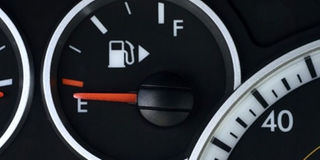What is the best speed for fuel economy?

What you need to know:
- Smooth acceleration or deceleration and gentle braking will keep your engine revs within the economical band around 1,500 rpm and keep your transmission gears high. Lifting your foot off the throttle when driving downhill, rather than slipping into neutral (coasting), will significantly reduce your fuel bill.
Paul, a friend and I have made a bet about which speed is the best for fuel economy on the highway. Is it 80 KPH or 120 KPH when we are both driving Toyota Premios? We want you to be the judge. Moses
Hello Moses, the side with the wager on 80 KPH wins the bet. After carrying out extensive tests and trials, many international organisations such as the Department of Transport (DOT) and independent motorists like myself have concluded that driving at medium speeds such as 80 KPH (kilometres per hour) is best in fuel economy terms than higher speeds such as 120 KPH. Driving at speeds below 50 KPH is inefficient and speeds above 80 KPH are increasingly inefficient.
Driving too slow or too fast requires low gearing and in the latter situation higher engine revolutions (revs). Both scenarios make the engine demand more energy and a higher toll on fuel. Driving faster increases air resistance or coefficient of drag, again your engine works harder and demands for more fuel to meet the energy demand. There are dependant variables in this equation. For instance vehicle design and load count.
A more aero dynamic saloon car, such as your Toyota Premio, responds better to air or wind resistance and has a better coefficient of drag than a boxy shaped minibus or truck.
The number of passengers or luggage carried creates more load and invariably makes your engine work harder and demand more fuel. Let us not forget ‘cut your speed, cut your fuel bill’. When you slow down and use some simple fuel saving tips your fuel bill drops significantly.
Let me share some fuel saving driving tips. Avoid over revving. High speeds demand fuel costly higher engine revs. The more economical review band for petrol engines is 1,500 rpm. Often high performance cars with bigger engines than your Premio need higher rev bands to shift gears.
Smooth acceleration or deceleration and gentle braking will keep your engine revs within the economical band around 1,500 rpm and keep your transmission gears high. Lifting your foot off the throttle when driving downhill, rather than slipping into neutral (coasting), will significantly reduce your fuel bill.




